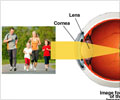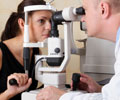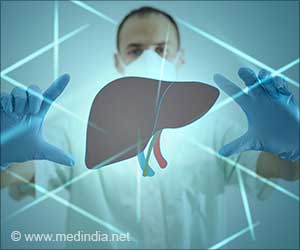An average 95.4 percent of LASIK patients have reported satisfaction with their new vision.
An average 95.4 percent of LASIK patients have reported satisfaction with their new vision. The American Society of Cataract and Refractive Surgery announced this today in the first review of the world body of scientific literature.
There are 16.3 million patients having had LASIK worldwide. LASIK is considered the most successful eye corrective procedure and has more than a decade’s backing of clinical study and technological innovation.“We find that there is solid evidence in the world’s scientific literature to affirm that there is an exceptionally high level of satisfaction in patients who have had LASIK surgery. While no surgery is perfect, certainly the 19 peer-reviewed studies of the 2,199 patients studied show extremely high satisfaction rates,” said Richard L. Lindstrom, M.D., president of the American Society of Cataract and Refractive Surgery. “While patient satisfaction is extremely high, we recognize that there are patients who have unsatisfactory outcomes. As surgeons, we have taken the Hippocratic Oath. The well being of all of our patients is central to what we do and what we are. As such, and as the history of medicine has shown, we are committed to advancing our technology, patient selection, and surgical techniques so that we can continue to enhance the quality of our patient’s lives,” Lindstrom added.
The meta-analysis, led by Kerry Solomon, M.D. at the Storm Eye Institute of the Medical Center of South Carolina, examines nearly 3,000 peer-reviewed articles published over the past 10 years in clinical journals from North America, South America, Europe, Asia, Africa and Australia. The research employed the Ovid and PubMed data bases using the term “LASIK” and similar search terms. A total of 2,915 articles were identified. “We wanted every article we could find, up to and including our last search, which was done on January 8, 2008,” Dr. Solomon said.
“This survey goes back to literature published 10 years ago. In that time, there have been major technological advances, such as wavefront-guided LASIK and the introduction of special lasers to form a flap on the surface of the eye in preparation for the laser treatment. Coupled with better surgical techniques, and improved patient selection, we can say that modern LASIK is a mature procedure.
It is important to note that its reliability and effectiveness have led to its adoption by the armed forces, in particular the US Navy, and the National Aeronautics and Space Administration for improving the vision of its front-line pilots and astronauts,” Dr. Solomon said.
Key Findings from “LASIK: A Global Perspective on Patient Satisfaction”
Advertisement
• Approximately the same percentage would recommend LASIK to a friend or would elect to undergo the procedure again.
• Outside the U.S., studies from France, India, Iran, Ireland, The Netherlands, Scotland, South Africa, Spain, Turkey, United Arab Emirates, and The United Kingdom, report very similar patient satisfaction rates of about 95.6 percent.
• The total range of satisfaction rates in individual studies was from 87.2 percent to 100 percent.
The first goal of the literature review is to assist in quantifying and qualifying aspects of LASIK patient satisfaction for a joint task force formed by the U.S. Food and Drug Administration (FDA) and including the American Society of Cataract and Refractive Surgery (ASCRS), the American Academy of Ophthalmology (AAO), National Eye Institute (NEI), and other members of the health community.
“Not everyone is a good candidate for LASIK. As ophthalmologists, historically the determining factor for candidacy has been the health of the eye and the refractive correction,” said Dr. Solomon. “Along with continued technology advances, exploring a more holistic approach to patient screening, with considerations for both physical and psychodynamic factors, may be the answer to further increasing patient satisfaction.”
Breaking down the clinical history of LASIK:
• Approximately 2,915 published and peer-reviewed articles with a clinical focus on LASIK were identified from medical journals published from 1998 to January 2008. Follow-up of patients in these studies ranged from one month to 10 years.
• Rigorous quality criteria assigned the studies into two classifications: Level 1 (well-designed, well-conducted randomized clinical studies) and Level 2 (well-designed control or cohort case studies, either retrospective or prospective).
• From the original 2,915 articles, 308 studies of primary LASIK cases (patients who had LASIK performed to reduce dependence on glasses or contact lenses) that included patient satisfaction, patient quality of life post-LASIK and other factors in their methodology were selected.
• The meta-analysis aggregates the findings of 19 studies (2,199 patients in total) that specifically address the question of patient satisfaction. The remaining 289 articles are being studied to determine if and what additional valuable data can be obtained.
The final results of Dr. Solomon’s literature review will be presented at the annual Symposium and Congress of the ASCRS, April 4-9, in Chicago. His presentation will provide more specific data from the meta-analysis, including the factors associated with patient dissatisfaction.
“Once a technology matures to this point, a profession committed to continual improvement will naturally focus on improving patient satisfaction,” said Dr. Lindstrom. “As the number-one elective procedure in the world, with one of the highest safety profiles, LASIK has shown its appeal to patients, and, as a profession, we look forward to continuing its advancement.”
Source-Eurekalert
THK/L











